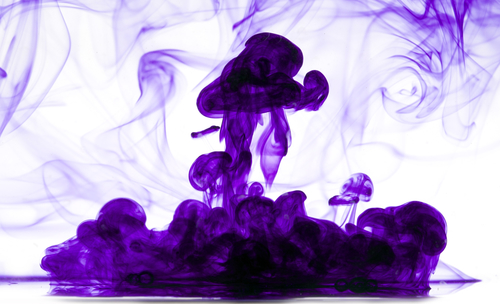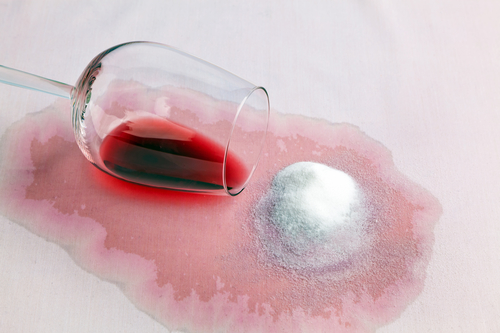With so many different substances that could stain your favorite dress, getting rid of spills and stains could be challenging, especially considering that the material of your garment plays a vital role on how to remove a stain. The good news is that cleaning your dress (or the dress of the little miss in the house!) doesn’t have to be burdensome anymore! Below, you will find super-effective and simple guidelines (and remedies) to help remove stains from different fabrics, such as cotton, wool, synthetic, and silk to enjoy your valuable assets in your armory for a long time!
Note: Before you clean your dress, always check the care label for instructions.
General Guidelines
How to Remove Stains from:
1. Cotton Dress
You are SO lucky! Cotton is a very durable fabric that can withstand lots of cleaning methods without being damaged. Whatever remedy comes in mind, is probably safe to use on cotton!
2. Synthetic Dresses
Although there are several types of synthetic fabric, they all allow many different techniques to be used to remove a stain. Their majority will respond pretty well if you just toss them in the washing machine and use regular detergent (gentle cycle). Just make sure the product you use contains enzymes and stay away from bleach and other strong chemicals that could damage the dress. Now, if you want to apply a stain remover first, check whether the product is safe for synthetic use.
3. Wool
Always read the instructions on the label of commercial stain removers as many of them damage the fibers of wool. Detergents like Persil Silk & Wool that have been specifically designed for wool are your best (and safest) option. Once you have cleaned the garment, though, pay attention to the drying process. The dress should be laid flat to dry so that it doesn’t lose its shape. Of course, if you are unsure of which product to use to get rid of a stain, you can take it to a professional to provide specialist treatments.
4. Silk
Silk is one of the most delicate fabrics, so the use of the right detergent is key. Although the stain might be small, it’s recommended to soak the entire dress to prevent water spotting. For tough stains, it’s best to allow dry cleaners to treat the dress, just to be sure.
Tip: It is extremely important to tackle stains as soon as possible before they set in for good. It will be easier for you to remove.
Now that you know the basics let’s talk about how you can remove stains with stuff you have in your kitchen cabinets.
Remedies to Remove the Most Common Stains
It is amazing how ingredients we all keep in our kitchens can effectively remove stains, too! So, instead of rushing to the nearest supermarket to get an all-purpose stain remover, next time, check this list first!
Removing:
1. Chocolate Stains
Put the dress in the freezer to harden chocolate and then scrape the excess off. Then turn the dress inside out and run hot water on the stain to melt it. This will also push it through the front. After that, soak the dress in milk for about an hour, after you have rubbed the stain with some washing up detergent. Rinse and wash as normal. If necessary, repeat the process.
2. Berry Stains
Wash the stain as yo would normally do and leave the dress out under the sun. The sun’s rays will bleach the stain. For persistent stains, take some lemon slices and place them on the stain. Rinse and dry as normal. If necessary, repeat the process.
3. Tomato Stains
In a bowl add a couple of tablespoons of white vinegar and soak the stain in it for 30 mins. Rinse and rub the stain with detergent. Wash on a cool cycle and repeat of necessary.
4. Ink Stains
Ink stains are among the most challenging to treat. We suggest soaking the affected area in hairspray or any other product that contains alcohol. Dab at the stain until it fades (use an absorbent cloth) and wash as normal.
5. Oil & Greasy Stains
Washing detergent or dishwashing liquid works wonders on greasy stains. Apply directly onto the affected area and rub in. Toss in the washing machine and wash on a hot cycle. If necessary, repeat the process.
6. Blood Stains
This remedy is for removing blood stains from common fabrics, such as polyester and cotton. For a more delicate type of fabric (i.e. silk)always refer to the label of the dress because you may need to take it to a professional to have it cleaned.
First, create a paste with cold water and salt and rub it directly onto the stain. If you can do so within 15 minutes after the stain has occurred, you’ll get rid of it faster and more easily. Rinse with cold water. If necessary, repeat the process.
Alternatively, you can:
Wet the stain with cold water so that it doesn’t dry and becomes a pain in the neck to remove. For larger stains, soak them in the sink or a bowl. For smaller ones, holding the stain under running tap water is great. We only need to make sure the water is not warm or even worse hot as it will make things worse.
Then, apply washing up liquid or soap to the stain and gently work it into t he affected area. Rinse with cold water. Repeat if necessary, although in most cases, you will see a visible difference instantly.
Once you are done treating the stain, you can wash with a laundry detergent (i.e. Persil Small & Mighty) on a normal cycle. Using a stain removal product on the spill before laundering won’t harm, too! But, always remember never to apply heat, be it from an iron, tumble dryer or water, to a blood stain because heat will set it for good and it will be almost impossible to remove.
7. Red Wine
Blot or dab the excess liquid with a piece of kitchen roll or clean cloth and apply salt the soonest possible (the stain should be still damp). This will not only soak up any excess liquid but also stop the stain from spreading and penetrating the dress’ fibers. Don’t rub the stain (although it could be tempting to do so!) as it will make the stain worse.
Although it may sound bizarre, apply white wine on the stain to neutralize it or make a paste with water and baking soda to help remove the stain. Wash as usual with a product for delicates, always reading the instructions on the care label on the dress and product you are about to use first.
Of course, there are times when addressing the red wine stain immediately and as described above is not possible (i.e. you are in the middle of a crowded restaurant). To prevent raising more than a few eyebrows, try to apply white wine to the stain and gently dab it to get rid of the excess liquid. Then, you should be able to see a difference.
Now, if the stain has partially dried, try soaking the dress in club soda or white wine. The same goes to larger red wine stains, too.
Since red wine stains are difficult to remove, there is a slim chance these methods don’t remove the stain entirely. In this case, get yourself a stain removal product and apply it to the stain (follow the label’s directions closely, though). Then, wash the dress on a cool wash as normal with a gentle laundry detergent, always avoiding heat. So, no tumble drying on high heat and no hot water to prevent the stain from setting in.
Note: Always try any method on an inconspicuous area of the dress or any other garment to make sure you won’t need to treat discoloration, too. If you are hesitant, just ask for a specialist’s advice.
There you go! Disaster averted! With these handy tips under your belt, removing stains from your favorite dress don’t signify the end of the world! Swift action and this guide will keep stains from ruining your dress with ease.
Have you tried any other stain-removing method and saw miraculous results? We’re dying to hear all about it!








